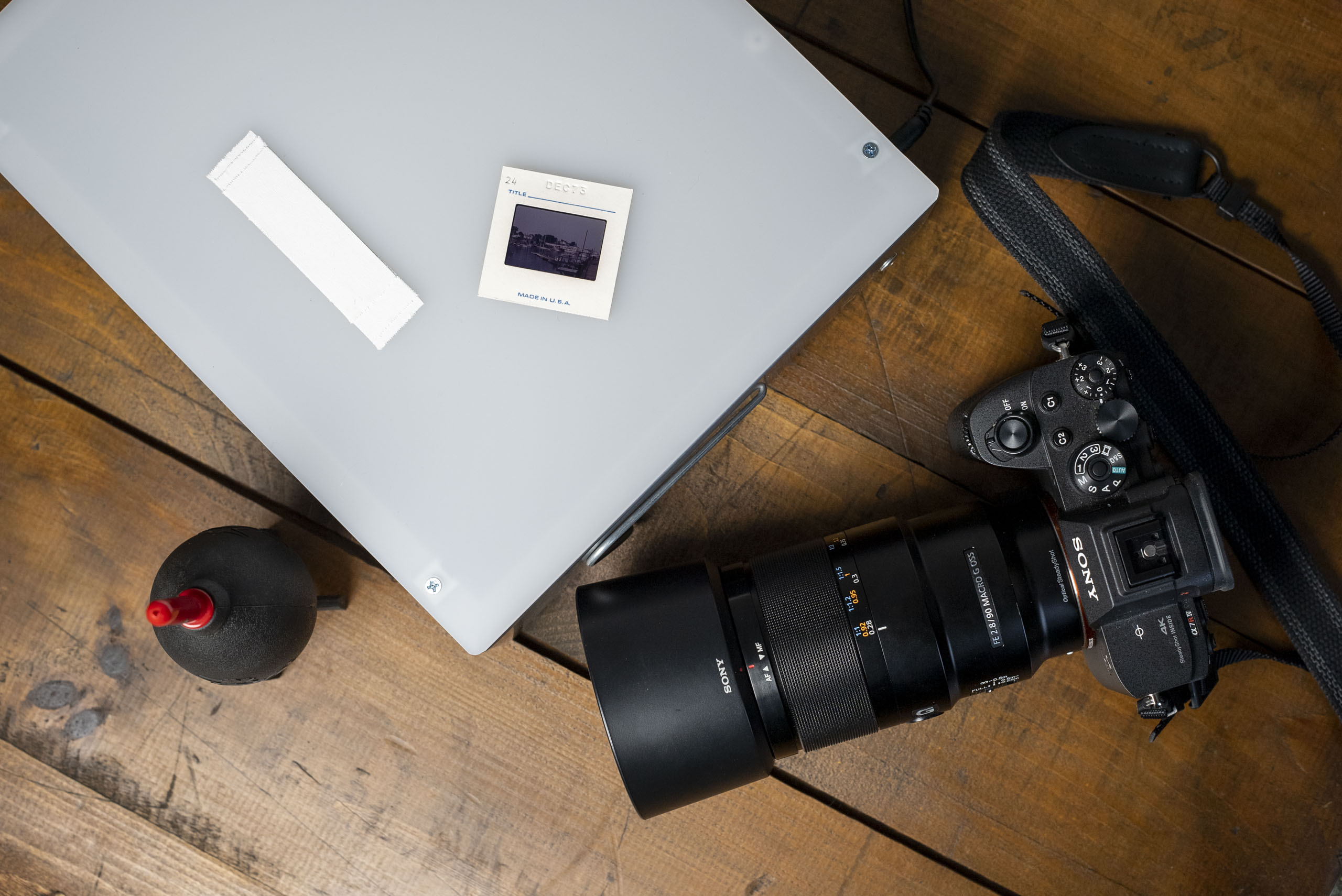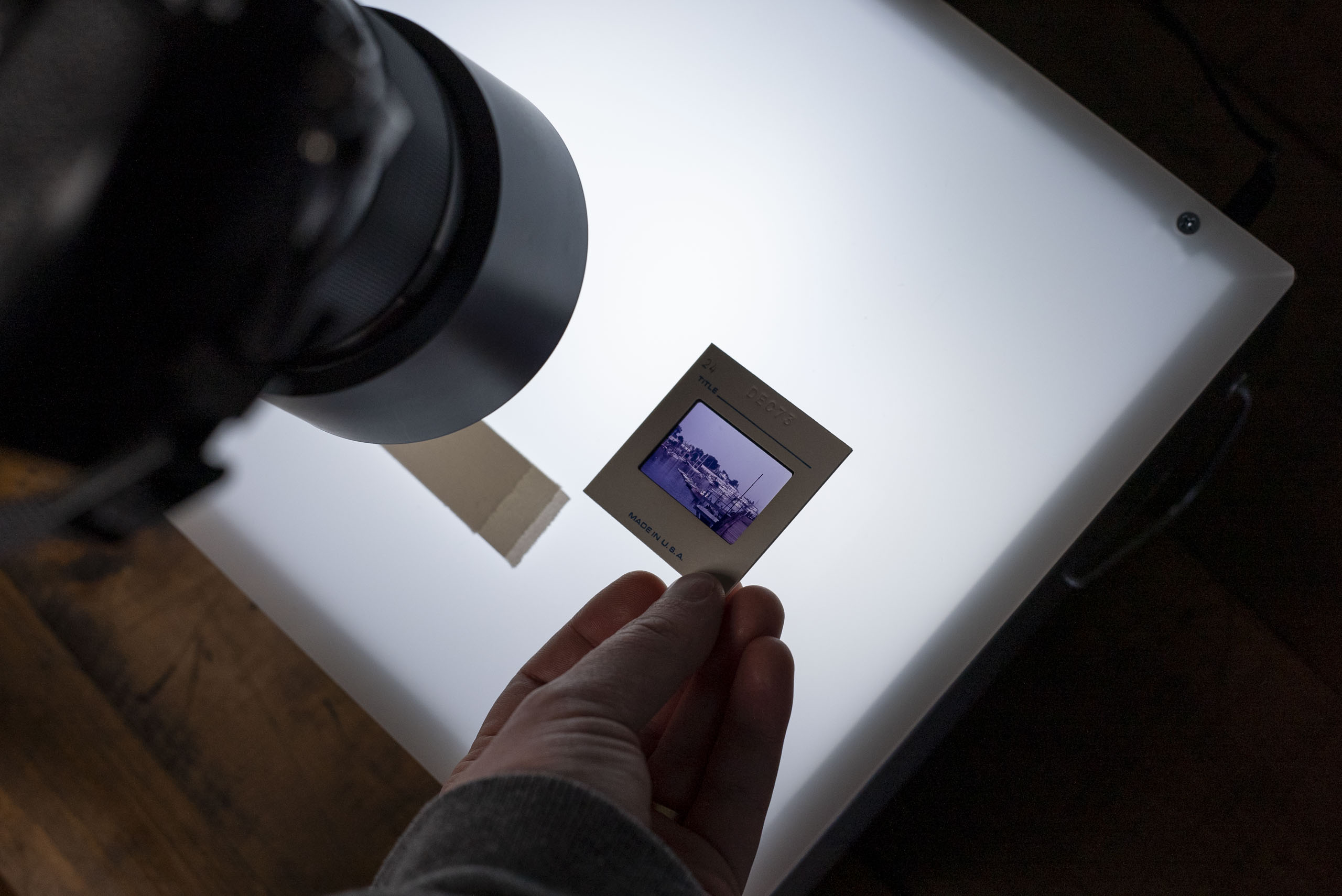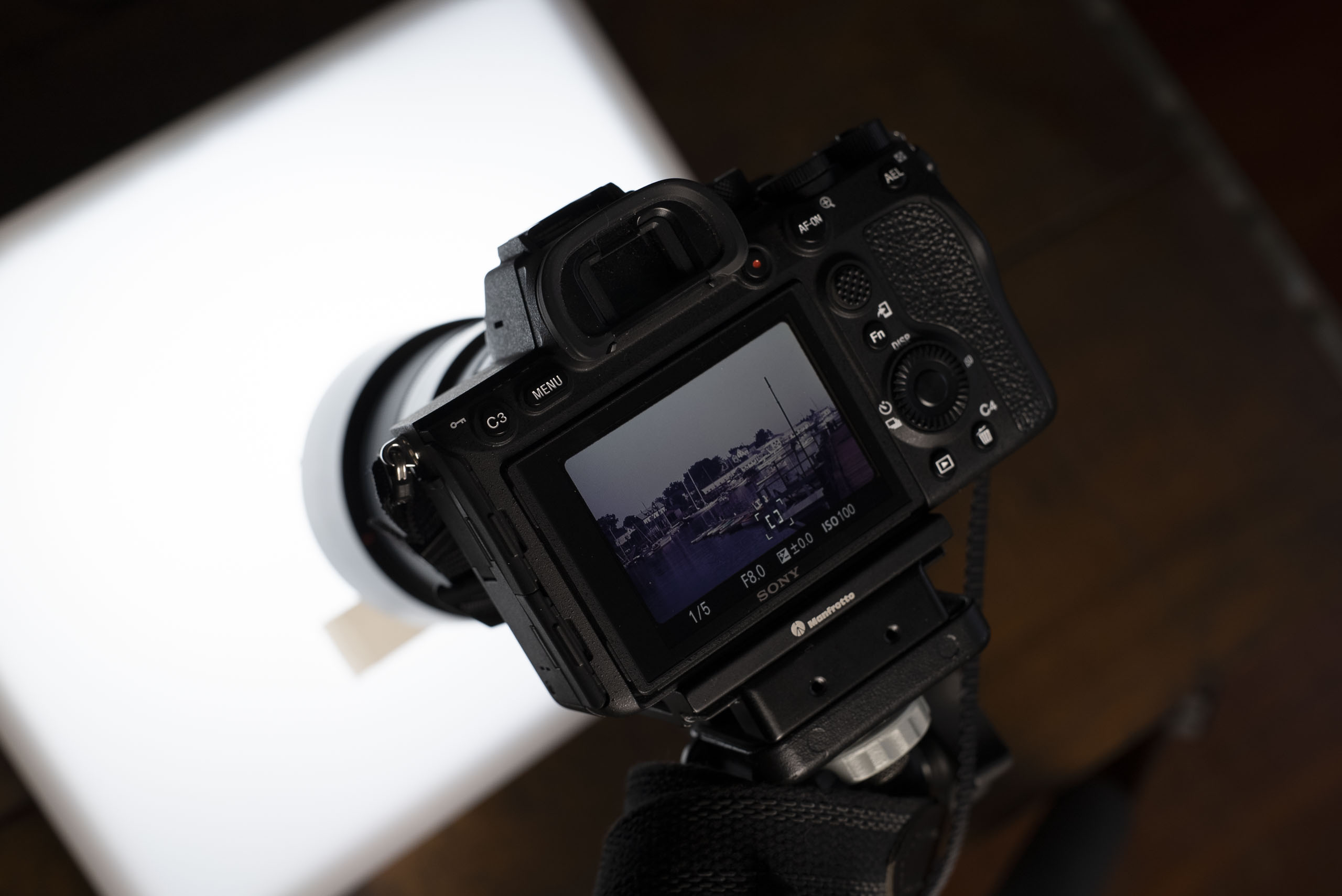How To Scan Film Negatives With Light And Camera
There is no doubt that digital photography is here to stay, and picture has certainly seen ameliorate days, in terms of availability and affordability. All the same, what if you're a digital lensman who only wants to shoot a ringlet of motion-picture show every one time in a while, for fun? Movie photography has a singled-out wait that, even with the latest and greatest 50MP cameras, cannot be duplicated past digital imaging. It's subjective to say whether ane look is meliorate or worse, simply there is no denying that there is a unique quality to film. Dorsum in the halcyon days of film photography, you could hands drop your rolls off at the local lab or drugstore, come up back an hour or day after, and have overnice iv x 6" prints along with a sleeve of negatives. Nowadays, this simple convenience is becoming harder and harder to acquire, and fifty-fifty if you lot're able to discover a professional lab to develop your moving picture, you usually won't want to pay the premium for all of those prints to exist made.
This is where being able to scan your negatives makes practical sense. Incorporating a common procedure that photo labs have been using for years, too as nearly any kind of printing production procedure, a scanner acts much like your regular camera; its chore is to record an image. The difference is that the scanner is a very specific image-making device, designed only for reproduction.
Scanning is a common procedure that most film shooters in the terminal xx or so years have come to incorporate into their practice in some manner, whether it is for scanning flick or your prints to share online or make digital prints. While a scanner is certainly a audio investment for those who shoot and need to browse large amounts of film, sometimes it is not the most applied investment. If yous're the type of photographer who will simply shoot a handful of rolls a twelvemonth, or if you're the type of photographer who enjoys using medium and large format films, finding a suitable scanner tin become a greater expense.
Luckily for most photographers, a truly sound tool for digitizing your movie is something you likely already accept: a digital camera. As previously mentioned, a scanner functions much like a regular movie-taking camera, and likewise a camera can exist used to perform similar functions as a scanner. Chief among these is the ability to rephotograph or duplicate your film for digital utilize. And with digital cameras' resolutions on the ascension, forth with the wider dynamic range and raw recording capabilities of mod sensors, yous now have the ability to produce high-quality digital files of your picture show for press and simple online sharing.
The Process and the Tools
The procedure tin be handled in a number of ways, either by photographing your film on top of a lite table or lightbox or through the use of a dedicated tool for rephotographing picture, such every bit the Nikon ES-2 Film Digitizing Adapter Set. In either example, the goal is merely to evenly backlight your film and then photograph information technology every bit clearly as possible.
In add-on to the lightbox, you'll need a DSLR or mirrorless photographic camera, and then you'll as well demand a macro lens. Ideally it will exist a true macro lens with a one:ane or greater maximum magnification, but you tin can get away with a 1:ii magnification lens with some extra work. Alternatively, you lot can also use extension tubes, reversing rings, or other accessories to aid increase magnification of a lens, but nothing beats the simplicity and accuracy of a true macro lens, peculiarly for this purpose, where you want your results to be every bit clean and clear every bit possible, with no distortion or vignetting.

The final essential item you'll need specifically for this process is a film holder of some kind—something to go along your flick still, in place, and taut. Holders also assistance with registration and help to expedite the process of photographing multiple frames of film, assuming y'all tin go along the holder in the same place throughout the process. A film holder tin take the grade of a simple cardboard sheet with a window cut out to fit your picture format, or you can discover dedicated metal holders, such as those from Negative Supply, for more precise and repeatable results.


Now, for the Process
Equally stated before, the bones premise is to photograph your film confronting a plainly, backlit surface. Ideally, you'll have a copy stand to hold your camera steady, but a tripod will besides work in a compression.
Load your film into your film holder, whether that be a makeshift cardboard window or a sophisticated purpose-made metal holder; the whole signal is to have something that keeps the film taut, registered, and in identify.
Blow the dust off your film prior to photographing it. I recommend using a seedling-type air blower for this procedure as canned or pressurized air might be too powerful in this instance (depending on your pic holder). Getting rid of dust prior to shooting volition save yous lots of time during the editing stages.

At present, with the picture show dusted, in the holder, and in forepart of the lightbox, it'south fourth dimension to go your camera set up. Working in live view (using your camera'due south rear screen) is preferred to using a viewfinder, in my stance. Even better, shooting tethered to a computer monitor will make framing and disquisitional focus much easier.
Compose your shot so the private frame of film is filling as much of your sensor area as possible, depending on the attribute ratio of your digital camera, the aspect ratio of the moving-picture show, and how closely you can focus. Getting a tight composition is another 1 of the helpful steps that saves time during post-production and likewise helps to eke out the greatest resolution possible. It'due south also helpful to set your lens to manual focus for this process then y'all tin can prevent whatever accidental focus shifts during the shooting process.

In terms of exposure settings, you'll want to apply the most optimum settings possible: highest resolution setting, best quality, bear witness in raw if possible, and using a middle aperture setting or the "sugariness spot" of your lens. Likewise, when making the exposure, I like to bracket my shots by a stop over and under (just to exist safe) and also make sure to use a remote shutter release or the camera's self-timer function to avert any unwanted camera shake.
And finally, shoot!
In one case you get a couple downwardly, y'all'll start to develop a rhythm and this whole procedure volition go by quickly. Just do everything in your power to keep your files and film strips organized and make clean; you'll give thanks yourself later. And i other tip: This procedure can exist used to make contact sheets of an entire roll of film that has been cutting into strips and sleeved, merely similar yous'd do in the darkroom. This is an efficient way to get a better look at numerous shots and narrow downward which specific images you want to re-photo rather than having to perform this routine for every frame in a ringlet.
Post-Product
As as important equally the bodily photographing of your film, the mail service-production and editing stages are primal to getting realistic and quality results from your efforts. If yous're photographing positive (slide) picture show, and then the editing stages are just doing some color tweaks and removing grit from the frame. If you lot're working with negatives, so things tin can be a scrap more circuitous, especially if it's color negative film. Beneath, I'll walk through a couple of examples of how I converted both black-and-white and color negatives to positive image files.
When converting the negatives to positives, I chose to work in Adobe Camera Raw with my raw files, prior to doing any fine-tuning in Adobe Photoshop. Hither are the basic steps I used to convert the black-and-white negative to a positive grayscale image.

ane. Since colour casts aren't going to affect black-and-white imagery as much equally color images during post-product, I moved direct to the curves in Camera Raw and inverted the curve.

2. I had a pretty flat image, mainly due to the clouded lighting conditions and the development procedure I apply for my film. Much like when recording video or even shooting stills, a flat epitome is much easier to piece of work with than an overly contrasty i. Here I just bumped the contrast some and tinkered with the other exposure controls before opening in Photoshop.

iii. I still have an RGB image when I start working in Photoshop, so I apply the black-and-white conversion tool to bring a bit more than contrast out of any remaining color in the file prior to converting the image to a grayscale working space.


4. I employ a curves adjustment layer to fine-tune the dissimilarity and brightness of the image.




Overall, this is a pretty simple process with cypher too special going on. The tonality is really nice, and the photograph of the negative has independent the highlights and brought out the shadow details well.
Moving on to a colour negative, the process is going to be a bit trickier due to the orangish mask of the film. Scanners are tuned to bargain with this mask already, and then the event of it is pretty moot when using a film or flatbed scanner. When photographing the negative, nonetheless, it tin can exist more of a business concern.

1. The most constructive fashion I accept found to negate the orange mask is was to treat it as a stiff color cast, so hither I pull the color temperature slider downward to 2000K to compensate for the overwhelming orange tone.

ii. I then movement over to the curves tab and capsize the curve to give me some semblance of a positive image.

3. My first effort to bring a bit of dissimilarity to the epitome here—notice how much more dramatic the shape of the curve is compared to the black-and-white one.

4. Moving back to the exposure tools, I add a chip more contrast and tinker with the exposure, highlights, shadows, blacks, and whites sliders. Annotation that since you lot are now effectively working with a negative image, as in how Camera Raw sees information technology, the exposure controls are in opposite (i.e., moving the exposure slider to the left makes the image brighter).

5. Finally, I open the image in Photoshop, flip the image horizontally since I shot it astern, employ a curves adjustment layer to fine-melody my contrast, and move on to working in the individual color channels to keep working at getting a neutral color balance.


If comparing color residual betwixt three capture methods—photographing the film, scanning on a flatbed, and using a defended film scanner—it is noticeable how each process negotiates the orangish mask of the color negative film in a different manner and requires a decent amount of fine-tuning to residual the highlights, mid-tones, and shadows across the spectrum. The variance in color casts is mainly nowadays due to the comparative nature of seeing three different versions next to one some other, simply it should exist pointed out that none of the images are unusable or show gross, uncorrectable false colors or irrecoverable details.



Pros and Cons
Photographing your film is a nifty way to digitize your filmic images from yesteryear or even from yesterday. It's a sound procedure that, with a flake of attention to detail, yields some very usable results. I'd debate it's non quite equally proficient as using a dedicated film scanner, simply it is a process that you can perform without needing to buy specialized mechanism.



Pros:
· Digitizing your motion-picture show is accessible. Especially if you already have a macro lens and a tripod, the only new pieces of equipment you'll need are a lightbox and a film holder. This can save you money and space, especially if you lot'll simply seldom be digitizing motion picture.
· Gives results that easily rival many depression- to mid-range movie scanners. Considering how incredible many of the latest digital cameras and lenses are, it's no surprise that they will yield image quality that surpasses many of the more than affordable scanners out there.
· Can suit different picture show formats and types. This is a large one; many movie scanners, even high-end ones, just back up 35mm strips of film. This ways if you have an archive of medium format or large format shots, then you're out of luck. By photographing moving-picture show, though, you're simply limited by how large your lightbox is.
Cons:
· Difficult to get consistent results. One of the biggest benefits of a dedicated flick scanner is how easy and efficient information technology is to get repeatable results.
· Time-consuming. Again, compared to a dedicated scanner, it tin be a more drawn-out process to manually photograph your moving-picture show ane frame at a time compared to a moving-picture show scanner with built-in motors and batch scanning features. If you're only scanning a few frames, it'southward no large bargain, but if you're digitizing hundred or thousands of frames, a scanner volition make the process much easier.
· You go out of it what you put into information technology. Not necessarily a con, per se, but a harsh reality is that you lot demand to exist very precise throughout this process to get the best results. You need to ensure the picture show is kept taut, and then sharpness isn't affected, make sure your exposure is spot on, and manage to get a expert digital conversion. When scanning, many of these concerns are automatically taken care of.



Overall, I admit that I've been surprised many times by how well the process of "scanning without a scanner" actually works. I'm nonetheless an avid movie lensman and rely on my film scanner as an integral office of my process present, merely I'chiliad grateful to know that digital cameras can as well be a useful complement to my filmic process. Digitized images have the potential to show tremendous depth and colour and can even exist pushed further if you were to make multiple exposures of the same frame and stitch and composite them together. It'southward heady that a digital camera tin can be the new unlikely addition to your bag of film tricks.
Let united states know if you have whatever questions about the process, or share your stories on photographing your film, in the Comments section, below.
Source: https://www.bhphotovideo.com/explora/photography/tips-and-solutions/scanning-without-scanner-digitizing-your-film-dslr
Posted by: dentonconly1969.blogspot.com

0 Response to "How To Scan Film Negatives With Light And Camera"
Post a Comment